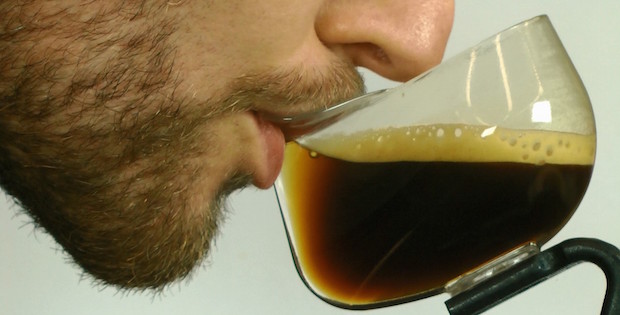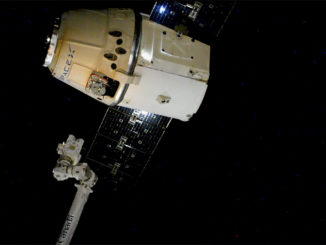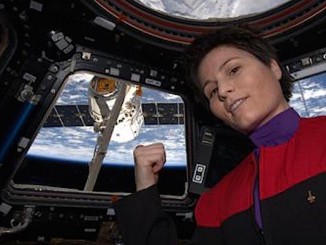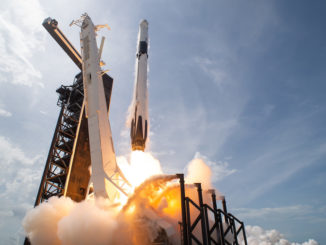
Italian astronaut Samantha Cristoforetti got a taste of home Sunday when she tried out a new espresso maker that is part creature comfort and part science experiment.
Cristoforetti made her first cup of espresso in space as teams of engineers looked on from Earth. Video recorded aboard the space station showed Cristoforetti and NASA astronaut Scott Kelly enjoying their morning jolt of caffeine.
The astronauts planned to drink espresso from 3D-printed coffee cups aboard the space station specially designed to keep the coffee from floating out in the absence of gravity.
Named ISSpresso, the espresso machine was made by Lavazza, a producer of coffee products in Italy, and Argotec, an Italian company which provides European food to space station crews and helps train European astronauts for space missions.
The Italian Space Agency partnered with the companies to support the project.
The machine produces espresso from capsules like many coffee makers on Earth, but getting the device to work in weightlessness was a challenge. Engineers will analyze the machine’s performance, hoping to learn how fluid mixtures behave differently in space.
“With the successful conclusion of today’s experiment, we have completed the challenge we set ourselves almost a year ago when we presented the project, not only overcoming the limits of weightlessness and allowing the astronauts on board the International Space Station to drink excellent espresso coffee, that undisputed symbol of Italian made products, but also improving our knowledge about fluid dynamics,” said Giuseppe Lavazza, vice president of Lavazza.
"Coffee: the finest organic suspension ever devised." Fresh espresso in the new Zero-G cup! To boldly brew… pic.twitter.com/Zw2CllJgzF
— Sam Cristoforetti (@AstroSamantha) May 3, 2015
Argotec said the astronauts can use the espresso machine to brew coffee, tea, broth and other hot beverages. Lessons learned from the machine could help improve brewing methods in the future.
The 55-pound device is equipped with heavy-duty steel parts to replace plastic components used on terrestrial espresso machines. It launched to the space station in April aboard a SpaceX Dragon supply ship.
Astronauts typically take beverages from bags through a straw. Without gravity, liquid can easily float out of normal drink containers, and the weightlessness makes it impossible to pour.
The cleverly-designed special plastic cups made to sip espresso in space aim to solve that problem.
Using mathematical models, researchers crafted cups with specific geometric shapes to keep the drink inside. What’s more, scientists say a notch on the rim of the cup allows astronauts to taste and smell the coffee as they would on Earth.
A capillary connection is established when an astronaut touches her lips to the cup, giving the drinker access to its contents, which could be a hot or cold beverage, said Mark Weislogel of Portland State University, who leads the team which developed the coffee containers.
Weislogel said the espresso cup experiment has its roots in research looking at how liquids move around in microgravity. Without gravity pulling liquid toward the ground, other physical processes take hold, such as surface tension.

That can be a problem when designing everything from drink cups to fuel tanks and propellant pumps.
“We’re changing the shapes of containers in such a manner that the liquid moves to the right locations passively, spontaneously,” Weislogel said in an interview aired on NASA TV. “It’s driven by surface tension, wetting forces, but it’s also crazy geometry. We’re developing the methods to do that so that you don’t use pumps, you don’t use centrifuges, and you don’t need gravity. The container determines its own bottom, so you know where the liquid is when it’s time to use it.”
Weislogel and his team started work on the coffee cup when they heard of the Italian plan to launch the espresso machine to the space station.
“With a cup, the astronauts would have an experience kind of like Earth, and you would be able to smell the aromas and you would be able to experience that kind of bonding phenomenon that takes place when you’re drinking a cup of coffee with friends during a break,” said Weislogel, who is also vice president and senior scientist for Oregon-based IRPI, a research and development firm. “That can relieve some of the stresses that are up there.”
Besides the cultural and quality-of-life benefits, Weislogel expects some hard data from the space cup experiment.
“We’re going to dink around having fun with astronauts during meal time, but we also expect to get quality science from this to verify and validate the models that we use,” he said.
Email the author.
Follow Stephen Clark on Twitter: @StephenClark1.



